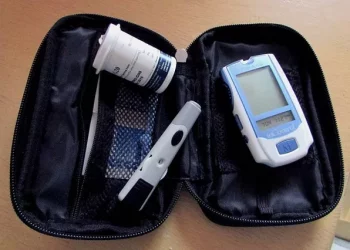A recent study has revealed a significant increase in the prescription of GLP-1 receptor agonists among people with type 1 diabetes, coinciding with rising obesity rates in this population. Between 2020 and 2023, nearly 20% of youth and 33% of adults with type 1 diabetes and severe obesity were prescribed GLP-1 medications.
The study, published in Diabetes, Obesity and Metabolism, examined medical records from over 200,000 patients spanning from 2008 to 2023, sourced from 30 health systems. Researchers found that GLP-1 drug usage surged, particularly among adults in the highest obesity category. The percentage of adult patients using these medications grew from about 4% in 2008-2011 to 33% by 2020-2023.
Dr. Jung-Im Shin, the study’s senior author, emphasized the need for more comprehensive clinical trials to assess the safety and effectiveness of GLP-1 drugs for those with type 1 diabetes. He pointed out that this will help establish clearer guidelines for their use in this specific group of patients.
Type 1 diabetes, traditionally associated with low body weight due to insulin deficiency causing fat and muscle breakdown, has seen a shift in recent years. Obesity rates among type 1 diabetics have risen significantly over the last two decades, leading to an increased risk of complications such as cardiovascular issues and insulin resistance.
The rising use of GLP-1 drugs like Wegovy and Zepound for weight management coincides with this trend. However, for type 1 diabetes patients, these drugs can increase the risk of hypoglycemia and diabetic ketoacidosis (DKA)—dangerous conditions that can occur due to insufficient insulin.
The study analyzed longitudinal data from more than 217,000 type 1 diabetes patients, examining trends across three-year periods. Obesity rates among youth aged 2-19 with type 1 diabetes increased from 18.1% (2008-2011) to 26.0% (2020-2023), while adult obesity rates rose from 30.5% to 38.1% in the same periods. These findings align with prior research highlighting a disproportionate obesity burden among Black and Hispanic youth and adults with type 1 diabetes.
Additionally, the study revealed racial and ethnic disparities, with youth on Medicaid exhibiting a higher prevalence of obesity compared to those with commercial insurance.
Over the past 15 years, prescriptions for GLP-1 medications grew across all body mass index (BMI) categories. In the most recent period, semaglutide and tirzepatide—more potent versions of GLP-1 drugs for weight loss—saw a notable increase in usage.
Dr. Yunwen Xu, the first author of the study, stressed the urgent need for clinical trial data to better understand the implications of GLP-1 drugs in type 1 diabetes patients. A follow-up study is already underway to evaluate the risk of serious hypoglycemia associated with these medications in this population.
Related topics:
High Prevalence and Lack of Awareness of Diabetes in Food-Insecure Population of West Chicago
Study Links New-Onset Type 2 Diabetes to Increased Risk of Obesity-Related Cancers
Non-Linear Relationship Between Fasting C-Peptide and Diabetic Retinopathy in Type 2 Diabetes

























